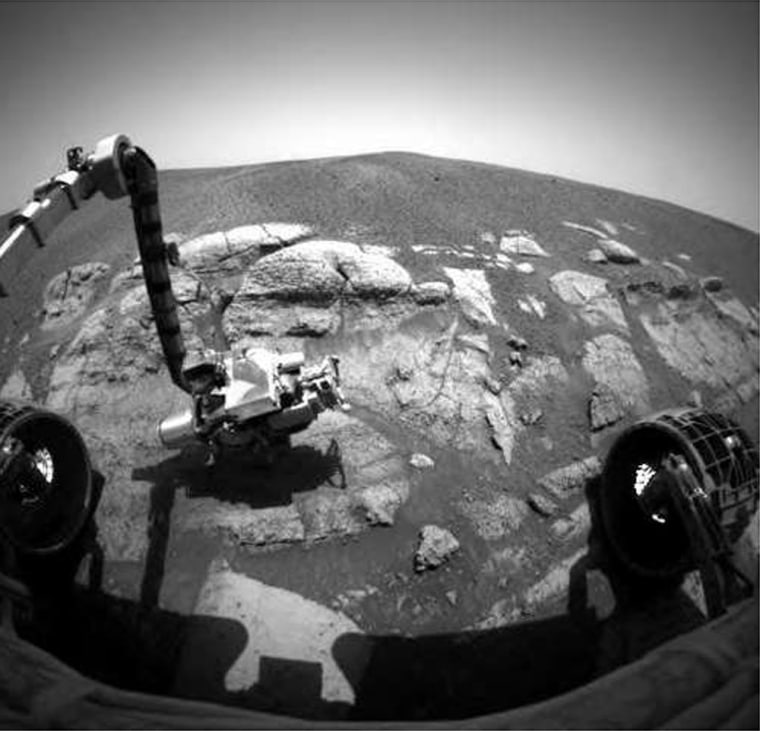NASA's Opportunity had a light day Wednesday, sending scientists information about a rock it has been probing and then taking a nap to power up its batteries.
The six-wheeled rover has been taking daytime naps to recharge because it is working night shifts to study a rock called "El Capitan." Because a Martian winter is beginning, the days are getting shorter, and less sunlight is hitting the solar panels to recharge the robot's batteries.
Scientists are planning to save energy by uploading software in the next month that will stop the robot from drawing on its batteries at night.
Currently, a set of electronics stays on at night even when the robot's main computer goes to sleep. The electronics include an alarm clock that makes Opportunity power up in the morning. But Cook said Opportunity could also be awakened by sunlight activating its solar panels.
"It turns out that besides having the alarm clock, it also can wake up when the sun comes up," Cook said in a conference call Wednesday.
Opportunity has been using its Mössbauer spectrometer at night to study a rock called "El Capitan." The German-built instrument, which measures the composition and abundance of iron-bearing minerals, keeps gathering data at night when the computer is powered down.

For the last two days, Opportunity has been sending the information to scientists when it wakes up in the morning, and then gone back to sleep.
Scientists involved in the $820 million Mars mission are studying "El Capitan" to examine how the rock formed. They hope the rover mission can uncover evidence of a watery, life-supporting past for the Red Planet.
On the other side of Mars, Opportunity's twin rover, Spirit, moved about 10 feet (3 meters) closer to a crater called "Bonneville," nearly 300 feet (900 meters) away. They expect the rover to reach its rim and peer into it for the first time in mid-March.
